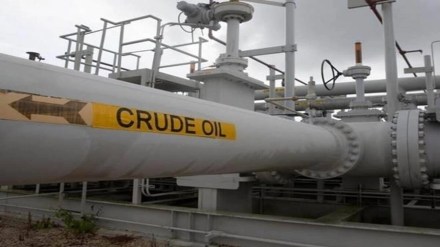By Manish Gupta
Share of Russian crude in India’s oil import bill, which saw a huge spike since the outbreak of Russia-Ukraine conflict in February 2022, from less than 1% to above 20%, is likely to rise further in the current financial year, analysts and sources from oil companies said. Indian oil marketing companies (OMCs) still make a net saving with sour crude from Russia despite high refining costs.
The chances of further acceleration in imports of oil from Russia have increased after the decision of OPEC and its allies, including Russia, last Sunday to reduce crude oil production that has resulted in Brent crude going up by $5/barrel to above $85/barrel. A negative fallout is Indian OMCs that are likely to have come out of the losses last quarter are again facing uncertain times.
“Earlier there were apprehensions about limitations of processing sour crude by Indian refineries, but not any more. The import of crude oil from Russia has shot up very significantly in the last year,” former petroleum secretary RS Pandey said, adding that the only issue going forward is about pricing.
In FY23 till January 2023, oil imports from Russia stood at 38 million tonne (mt), which is 20% of India’s total import of 194 mt, Kotak Institutional Equities said in a report. In terms of value, Russia’s import cost was $25 billion, or 18% of total $138 billion oil bill for India till January 2023.
“Russian crude oil is not absolutely suitable for Indian refineries. It is costlier to process that crude but on net value, they (refiners) may still save a bit of money. Therefore, there is a continuation,” said Deepak Mahurkar, partner and leader, oil and gas, PwC India.
Though most analysts are of the view that share of Russia in India’s crude oil import will rise substantially from the elevated levels seen in the past few months, they believe that it will inch up in the current fiscal. As per an Icra study, Russia’s share stood at 29.4% of total India’s crude oil import in three months till Febraury 2023.
“In case the discounts remain and we expect them to, the share of Russian crude import to India will remain at 20-25% this fiscal,” said Prashant Vasisht, vice president and co-group head for corporate ratings at Icra.
Suggesting there is still room for processing additional Russian crude oil in India, a senior official of a state-run OMC, on the condition of anonymity, said that though there are multiple issues related to imports from Russia, including the price cap of $60/ barrel on sale of Russian crude imposed by the G7 group of nations. The OMCs’ imports from Russia is now 25-28% and is likely to remain at this level, the official added. “As for our ability to process Russian sour crude, there’s an additional maintenance cost of $1 to $1.5 at the refineries but still there is a net saving in using Russian oil,” he said.
However, irrespective of whether India will look for more Russian crude oil or not, all agree that in the absence of free pricing regime the costs for OMCs will be under pressure in 2023-24.
“We know that there is very little flexibility on pump prices at this juncture. It will have a pressure on costs,” said Anish De, global head-energy and natural resources, KPMG. He said there is a limit where India can take sour crude and that it has already been reached.
There is also some uncertainty related to the continuation of discounts, an important factor for Russian oil imports, that Indian companies received in the range of 11-16% last fiscal. With more countries, including Japan, part of G7, not honouring the $60/barrel cap in purchasing Russian oil, there is a likelihood of discounts narrowing down.
Analysts also highlighted the fact that Indian public sector oil companies are finding it logistically tough to manage cargoes from Russia. There is also a limitation that is due to the term contracts of Indian OMCs with West Asian producers that fixes the quantity to be lifted though not at a fixed price, and this is usually in the range of 70%.
Indian Oil, Bharat Petroleum and Hindustan Petroleum, the three state-run OMCs, which suffered negative margins in the first three quarters of the last fiscal and are expecting to report improvement in operating performance in the fourth quarter, are again concerned.
“Q4 may be profitable for the OMCs because of lower prices of crude for a good part. On HSD front, we had calculated they had turned profitable. With this (OPEC’s decision and prices rising), the impact would be that HSD could again turn to negative marketing margin product for OMCs,” said Vasisht of Icra.
In terms of balance sheet, if the crude becomes more expensive, the short-term debt will go up because the working capital is blocked for higher product and crude prices. The short-term debt levels and obviously the interest costs would increase, he added.
